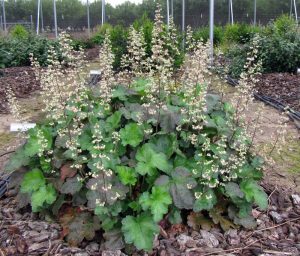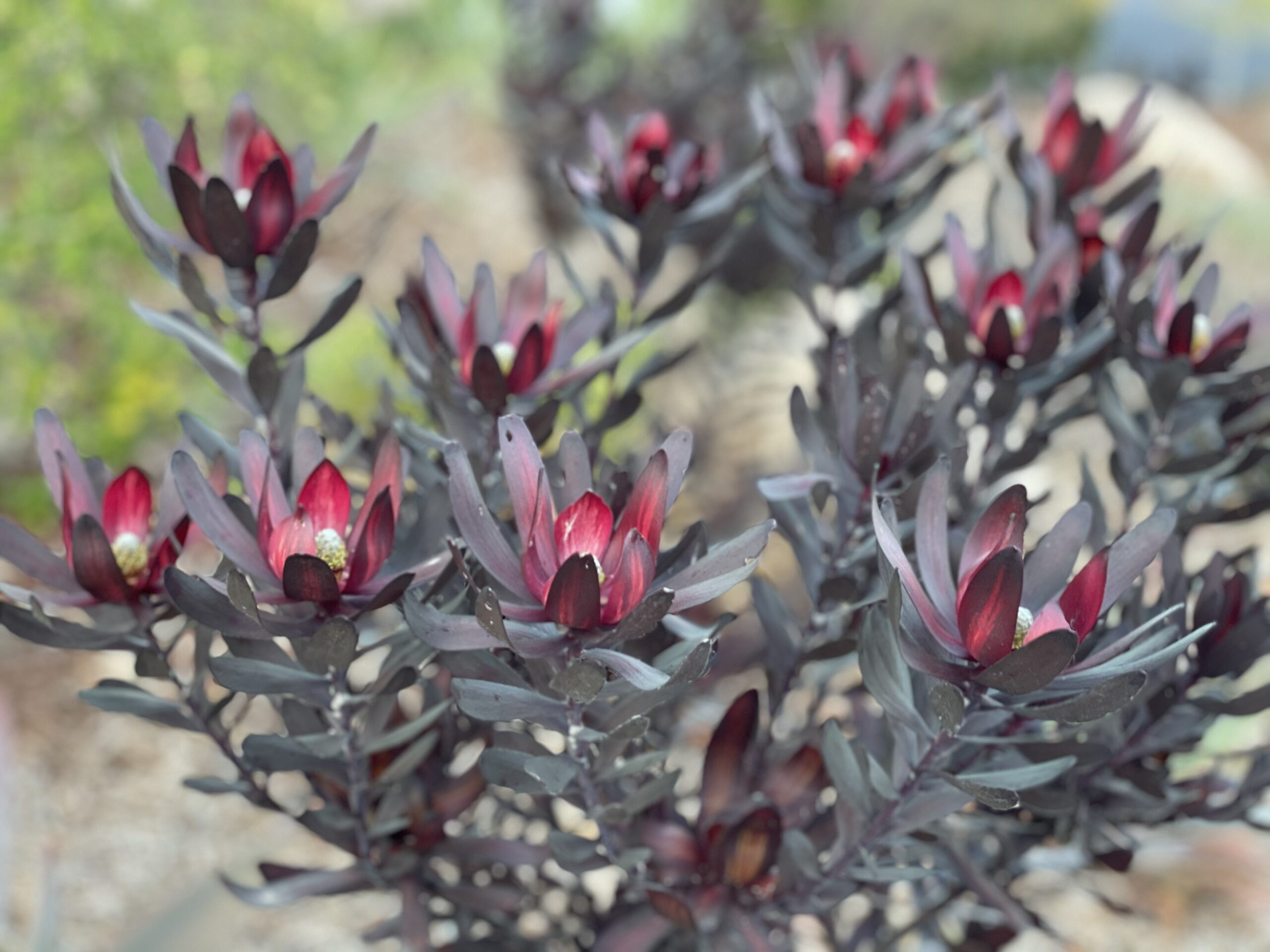
Best Plants in Low Water Field Trials Named Blue Ribbon™ Winners.

Contributor

If you are looking for attractive plants for a low water garden, the UCLPIT Blue Ribbon™ winners are a great place to start. These are plants that have performed exceedingly well on low water in the University of California Landscape Plant Irrigation Trials (UCLPIT) in Davis and/or Irvine.
What Makes a Winner?
In these two-year in-ground research trials, plants are rated monthly on a scale of 1-5 (low to high) for foliage quality, flowering abundance and duration, resistance to disease and pest pressure, and perhaps most important the overall garden appearance—the WOW! factor. As all gardeners know, there are plants that fill a space but might be described as just okay, and then there are the plants you see from across the street or the garden center and say, “Wow! What’s that?”
For a plant to receive our Blue Ribbon™ award, its average overall appearance must be very good (4) to excellent (5) (WOW!) on our lowest irrigation treatment. The plants in the lowest treatment were watered deeply only two to four times from April to October when growing in full sun and silty clay loam soil, and three to five times in fine sandy soil. In the shade, plants received two or fewer irrigations all season.
Here are a few of my favorite Blue Ribbon™ winners. To be on my list, the plant has to stand out in the garden, look good most of the year, require at most one good pruning a year, and the bonus: provide some benefit to beneficial wildlife in the way of shelter, pollen, nectar, or seeds. In short: the best of the best. These are the plants I take home for my own garden after the trials are through. For a complete list of Blue Ribbon™ winners, visit our website.
SHRUBS

Delta Blues™ Chaste Tree (Vitex agnus-castus ‘PIIVAC-1’)
This was the plant that made visitors to the field in 2018 say, “Wow, what’s that?” Smaller than the species, this is still a very large shrub, and though it could be easily pruned to a small tree, it will still need space to display its panoply of violet blooms. From the time it started blooming in June with a peak in July and lasting through October, it was never without some flowers buzzing with bees and butterflies.
Meerlo Lavender (Lavandula X heterophylla ‘Meerlo’)
Meerlo lavender is a variegated cultivar that was evaluated in northern California clay loam soil and in southern California sandy loam on reclaimed water, and it won a Blue Ribbon™ in both locations! It has a very tidy habit and in two years reached about two feet high in both locations, though in Davis it was only 38 inches wide while in Southern California it reached over five feet wide. Although grown mostly for the gorgeous fragrant foliage, this bloomed quite heavily in Southern California to everyone’s delight and surprise.
Pink Eyre Australian Fuchsia (Correa pulchella ‘Pink Eyre’) Shade evaluated
Tiny pink bell-shaped blooms cover this tidy little shrub from early winter to spring, bringing some winter cheer. It never needs pruning, reaching about two to three feet tall and wide in a very pleasing uniform habit. Its leaves are dark green and densely cover the branches. It is a perfect dry shade shrub where structure and reliability are desired.
Pink Knock Out® Rose (Rosa ‘Radcon’)
You may think it odd to include a rose, but to find a truly low-water shrub rose that performs this well is a treat. This is a profuse bloomer throughout the summer. Petals begin deep pink and fade to pale pink, giving a multi-hued impression before self-cleaning. Although there are some spent petals on the plant as the season progresses,

the eye is still drawn to the bright pink that just keeps on pushing all season. The plant is disease-free and has deep green foliage to contrast with the blooms on a naturally well-shaped shrub.
Snowy River Wattle (Acacia boormanii)
Technically a large shrub, this Acacia can be pruned to form a small multi-trunked tree with a weeping habit. Its narrow leaves provide dappled shade for perennials beneath. It is as non-demanding as other acacias, but the really eye-popping aspect of Snowy River wattle shows up in February when the whole thing bursts into sulfur yellow bloom. Plant it where you can view it from a window on a gloomy winter day.
GRASSES/GRASSLIKE PLANTS

False Esparto Grass (Lygeum spartum)
Although this Mediterranean grass may not be found in big box garden centers, it is well worth requesting through your local nursery from one of the several growers producing it. What I love about this grass is that the blades are more like a fine rush, very tough and evergreen, so no annual pruning is required. It also pretty much cleans its own seed heads, meaning there is almost no maintenance required to keep it looking tidy. The absolute best thing about this grass, however, is the unique flower spike and seed head that looks like a tiny origami crane’s head. Their tan color contrasts beautifully with the bluish green foliage.
Lime TuffTM Lomandra (Lomandra longifolia ‘Lomlon’)
Platinum BeautyTM Lomandra (Lomandra ‘Roma 13’)
Lime Tuff is my personal favorite lomandra for its color and tough-as-nails nonchalance about growing conditions. We have grown this in both sun and shade, and at home I have it in a cobalt blue pot. What I love about this cultivar is the lush, thick foliage that doesn’t need annual pruning the way grasses do. In the sun, it makes an upright bright green accent that looks good year-round. In bright shade, it becomes more fountain-form and lax, but the bright lime color still shines. Another stunner for dry shade is ‘Platinum Beauty’, a variegated Lomandra that brightens up a shady spot.

Undaunted® Ruby Muhly (Muhlenbergia reverchonii ‘PUND01S’)
‘Undaunted’ muhly grass was discovered as a selection of the species by Lauren Springer Ogden and Scott Ogden for the PlantSelect® program in Colorado. More compact than the straight species, it is a lovely, fine-textured, and loose grass when not in bloom, but absolutely stunning in late summer and fall when sporting a crown of deep plum flower spikes that toss around beautifully in a breeze.
PERENNIALS

Cape Balsam (Stalked Bulbine) (Bulbine frutescens and cultivars)
I truly believe no western garden should be without at least one patch of the South African native bulbine. Not only is it completely undemanding and unbothered by pests or disease, the tidy base of succulent foliage sends up masses of long flower spikes with dozens of gradually opening blooms in shades of yellow, or yellow and orange in the case of the cultivar ‘Hallmark’. My favorite cultivar, if you can find it, is ‘Tiny Tangerine’, a more compact, paler-orange specimen that is perfect for the front of the border. It can tolerate some shade, and in harsh environments may prefer a bit of afternoon shade. It is well-loved by bees while blooming, but my favorite aspect may be that ladybugs love to over-winter down inside the tightly packed leaves. When spring arrives, they are waiting to pounce on pesky aphids, making bulbine a great companion for low-water roses. Want a second patch? Simply break off a small rooting piece, tuck it into the soil, give it some water, and in no time, you will have another spot of garden sunshine.

Island Alum Root (Heuchera maxima)
Although this is not a flashy new cultivar, I love this California native coral bells for its toughness and beauty in a dry, shady garden. The scalloped leaves make a lovely filler for the front of the border, while the tall stalks of foamy white flowers are quite beautiful in spring. Like other coral bells they are easy to clean up by just snapping off the dried flower stalks, but they are much less demanding of water than their flashy cultivar cousins.
Asking a horticulturist to pick their favorite plants is like asking a mother to pick her favorite child. There are so many wonderful low-water plants to choose from. I hope this short list gives you a taste of what is out there for beautifying our urban landscapes without wasting water, and sends you searching for your own can’t-live-without-them plants.
For more information on the trials, visit the UCLPIT website.
Share:
Social Media
Garden Futurist Podcast
Most Popular
Videos
Topics
Related Posts

Expand Your Palette: Waterwise Plants for your Landscape
There’s nothing more thrilling to plant lovers than discovering new plants to test in the garden. Here in the southernmost corner of California, we have

What Climate is This? Part Two – A Garden Futurist Special
Winter 2022 Listen to the Part 2 Podcast here. If you live in the Pacific region, you know that seasons in your garden look different

Add Water: Scratching the Surface on Irrigation
Fall 2022 At its simplest, landscape irrigation is a combination of how much and how frequently water should be applied. However, these are two expansive

Just Add Water: How to Hack Your Controller
Fall 2022 Read the preceding article here. A weather-based irrigation protocol allows you to adjust irrigation to meet plant needs by irrigating more frequently in








Responses